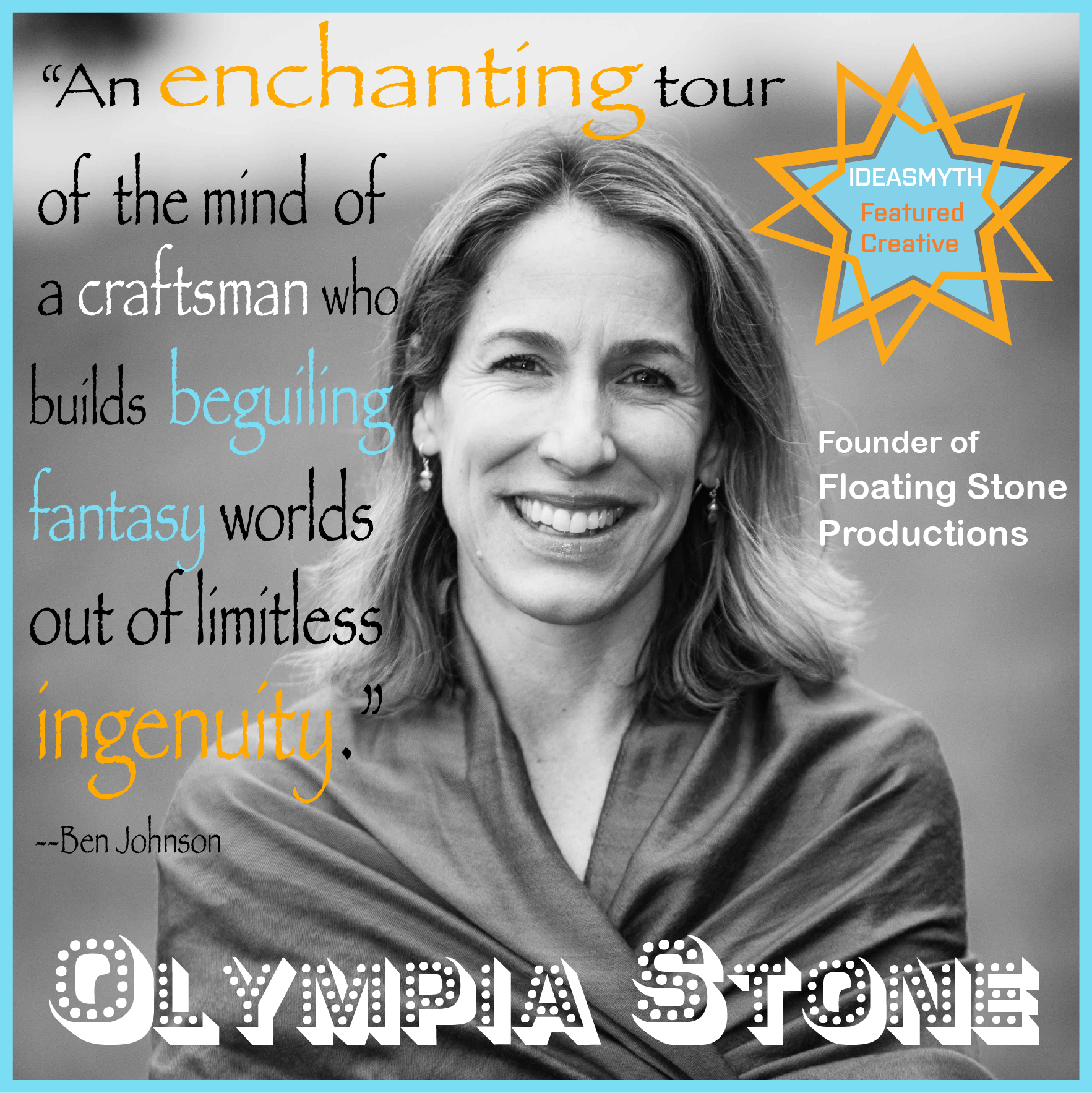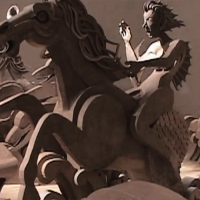 Olympia Stone grew up in a house where the artworks outnumbered the family-members several hundred to one. Her father was Allan Stone, the Upper East Side gallerist whose talent for discovering talent changed the contemporary artworld as he had serial success knighting new art stars from 60s through 2006 (the year of his tragically premature death). When Olympia got older, she became more and more curious about who made these larger-than-life (some were 15-feet tall!) former roommates, and so she founded Floating Stone, a production company dedicated to making films that permit the public the kind of intimate access to art that she grew up cherishing. Her first three documentaries have been racking up audience awards and critical acclaim on the festival circuit in addition to airing on PBS, proving that she too has inherited her father’s talent for discovery, albeit in her own medium. Having known Olympia since we both played kiddie tennis together, I couldn’t be happier for her—all these years later, I still can’t wait to see what she’ll serve up next!
Olympia Stone grew up in a house where the artworks outnumbered the family-members several hundred to one. Her father was Allan Stone, the Upper East Side gallerist whose talent for discovering talent changed the contemporary artworld as he had serial success knighting new art stars from 60s through 2006 (the year of his tragically premature death). When Olympia got older, she became more and more curious about who made these larger-than-life (some were 15-feet tall!) former roommates, and so she founded Floating Stone, a production company dedicated to making films that permit the public the kind of intimate access to art that she grew up cherishing. Her first three documentaries have been racking up audience awards and critical acclaim on the festival circuit in addition to airing on PBS, proving that she too has inherited her father’s talent for discovery, albeit in her own medium. Having known Olympia since we both played kiddie tennis together, I couldn’t be happier for her—all these years later, I still can’t wait to see what she’ll serve up next!
~Victoria C. Rowan, Ideasmyth Creatrix-in-Chief
***
I always marvel at the way this film grew totally organically out of the sudden death of my father and the way that one of his artists confronted his death. And at the same time, the impermanence of his own work. Jimmy Grashow’s work crowded my home. He made huge 15-foot-tall paper mache men that terrified me as a child. I thought his creatures came alive at night and would run as quickly as possible to get back to the safety of my bed if I ever ventured outside of my room in the dark. In the year before he died, my father put some of Jimmy’s sculptures outside on our lawn, and left them out there to disintegrate. It was a shocking act—and absolutely puzzling for a man who loved art so much to be so breathtakingly careless. Right after my father’s death, Grashow saw, for the first time, his sculptures outside disintegrating. This terrible discovery charged Grashow with a desire to confront the impermanence of his work. He decided to build something exquisitely beautiful—all out of corrugated cardboard, his favorite material—and then leave it outside to let it fall apart. I followed this process from the beginning to the end, and the film took me six years.
It became so much more than a story about making art. I think of Grashow as an artist–philosopher, a man who is always asking the big questions. And as he worked in his studio, I would film him as he questioned himself, his process, and what the point is of creating when it all becomes dust in the end anyway? I learned so much about my own creative process as I was listening to Jimmy–especially the idea that the creative process is hard work. It’s not all floating on clouds of endless inspiration—you have to be disciplined and bring yourself to your studio every day. When I witnessed this incredible artist’s own creative process I realized that while inspiration is important, it isn’t the essential part of the creative process—that creation can be hard and messy and even boring sometimes. But for those who are driven to create, there is no other way. One foot in front of the other!
See more of Olympia Stone’s Featured Creative posts on our Ideablog
 ~~~Olympia Stone is an award-winning independent producer, director and editor of documentary films. Her intimate portrait of the artist James Grashow, The Cardboard Bernini, details his exhilarating quest to create an intricately detailed cardboard version of the Trevi fountain, which he intends to abandon to the elements. Broadcast nationwide on PBS in 2013-14, the film also won Best Documentary at the Art of Brooklyn Film Festival 2013, and was an official selection at Sebastopol, Santa Fe and 18 other festivals. Her first independent film, The Collector: Allan Stone’s Life in Art (2007), chronicles the obsessive collecting of her father, a New York art world gallerist whose habits and prescient scouting shaped his life and the lives of many in his artfully cluttered orbit.
~~~Olympia Stone is an award-winning independent producer, director and editor of documentary films. Her intimate portrait of the artist James Grashow, The Cardboard Bernini, details his exhilarating quest to create an intricately detailed cardboard version of the Trevi fountain, which he intends to abandon to the elements. Broadcast nationwide on PBS in 2013-14, the film also won Best Documentary at the Art of Brooklyn Film Festival 2013, and was an official selection at Sebastopol, Santa Fe and 18 other festivals. Her first independent film, The Collector: Allan Stone’s Life in Art (2007), chronicles the obsessive collecting of her father, a New York art world gallerist whose habits and prescient scouting shaped his life and the lives of many in his artfully cluttered orbit.

